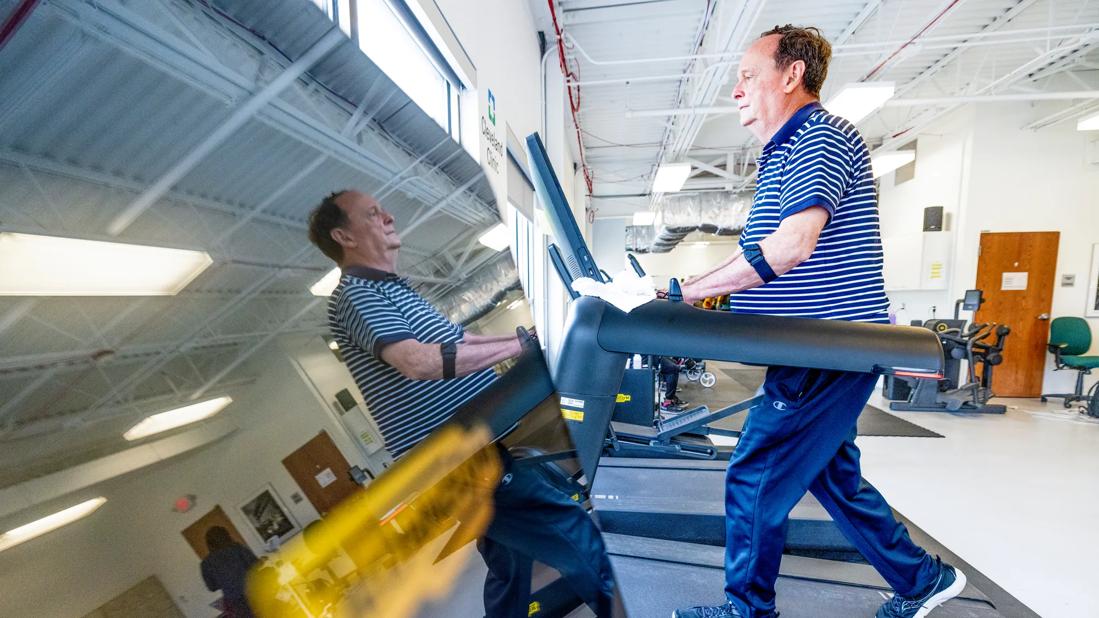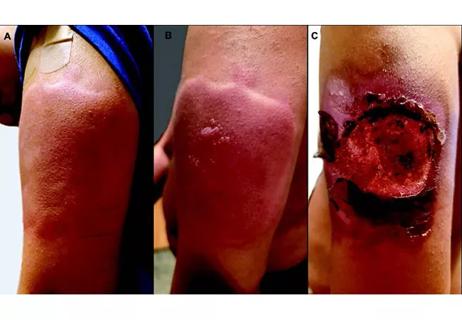Cleveland Clinic team publishes its experience ensuring safe delivery of essential care

Cardiac rehabilitation (CR) is as essential as ever in the COVID-19 era, and scalable delivery of safe, uninterrupted phase II CR is achievable across a regional health system in the face of the pandemic. That’s the central message of a new commentary by a team of Cleveland Clinic clinicians published in the Journal of Cardiopulmonary Rehabilitation and Prevention (2021;41:88-92).
Advertisement
Cleveland Clinic is a non-profit academic medical center. Advertising on our site helps support our mission. We do not endorse non-Cleveland Clinic products or services. Policy
The article provides an experience-based overview of how Cleveland Clinic health system’s nine CR centers across Northeast Ohio have worked to provide their patients with safe, routine and effective access to phase II CR services since the start of the pandemic.
“Exercise-based cardiac rehabilitation is a proven medical therapy that can be effective for lowering risks of secondary events, hospitalizations and death for at least five years following the critical three months of center-based rehabilitation therapy,” says lead author Erik Van Iterson, PhD, MS, Director of Cardiac Rehabilitation in the Section of Preventive Cardiology and Cardiac Rehabilitation. “Even temporary disruption of this therapy can allow resumption or hasten disease progression, with increased risk of new or recurrent adverse cardiac events. When restrictions to in-person care were introduced early in the pandemic and with no known end date, we needed to identify long-term pragmatic solutions to keep these restrictions and patients’ understandable anxieties about COVID-19 from becoming barriers to their participation in vital rehabilitation therapy.”
The commentary by Dr. Van Iterson and his colleagues shares insights from Cleveland Clinic’s experience overcoming these barriers on two fronts: telerehabilitation services and resumption of center-based CR with universal safety precautions.
When Ohio mandated an eight-week shelter-in-place order starting in mid-March 2020, patients’ access to center-based CR was restricted. Because there was no federally backed model for CR telemedicine from the Centers for Medicare & Medicaid Services, Cleveland Clinic swiftly developed and implemented its own standard-of-care model for what it dubbed “teleCRehab.”
Advertisement
“Based on extensive experience delivering center-based cardiac rehabilitation in Northeast Ohio, we knew our teleCRehab model needed to be inclusive to patients of all backgrounds by being accessible through the technological resources that patients already had,” says Dr. Van Iterson.
That meant giving patients the choice of connecting with clinicians during the shutdown via a range of options — webcam, smartphone, landline phone or non-smart cell phone. “Allowing patients to participate in teleCRehab regardless of device or technological savvy helped ensure our core goal of continued engagement of all patients throughout the shutdown period,” says commentary co-author Leslie Cho, MD, Section Head of Preventive Cardiology and Cardiac Rehabilitation.
Established patients were instructed to journal their weekly exercise activity following exercise prescription guidelines outlined in their existing individualized treatment plan. They were also offered weekly one-to-one remote 30-minute summary sessions with CR staff to discuss progress made with exercise training and their other heart-healthy lifestyle goals.
Patients newly eligible for CR could enroll via a video-based virtual visit through Cleveland Clinic’s electronic medical record system, or they could undergo a similar entry evaluation by telephone if they lacked a webcam or smartphone. Regardless of the technology, the evaluation included comprehensive discussion of what CR involves, expectations, and development of an individualized treatment plan with an exercise prescription and goal setting. Patients were then followed weekly using the model for established patients described above.
Advertisement
No patients experienced adverse cardiac events or other complications from participating in home-based exercise consistent with their treatment plan, the commentary authors report. Although only a limited number of patients eligible for phase II CR have chosen the teleCRehab model since the initial shutdown, the authors note that the model continues to offer a valuable access option for patients through the later stages of the pandemic and beyond.
As Cleveland Clinic prepared to resume center-based CR when the initial shutdown ended late last spring, the team found little published guidance that translated theoretical solutions to real-world CR practice in diverse communities like that of Northeast Ohio.
Their efforts focused on adapting universal safety precautions for COVID-19 to the demands of a medically necessary exercise setting. Actions taken to date are specified in a detailed table in their freely accessible commentary. In addition to practices to ensure 360-degree social distancing around exercise equipment and proper masking by patients and use of personal protective equipment by CR staff, the actions included careful calibration of class volume capacities.
The published commentary also includes an algorithm detailing how Cleveland Clinic allocated patient access to finite physical space and resources. “For centers where physical gym space may limit accessibility due to physical distancing, we advise first allocating resources to higher-risk patients who may require regular in-person staff oversight and greater use of telemetry monitoring,” explains Dr. Van Iterson. “However, this doesn’t mean lower-risk patients are denied access to routine rehab guidance; rather, such patients are urged to use weekly teleCRehab services where our staff can use a multimodality approach to address all aspects traditionally covered in an on-site setting.”
Advertisement
The authors report that no COVID-19-positive cases could be tracked back to any of Cleveland Clinic’s nine CR centers as of their time of writing in early January 2021. This was achieved despite patients completing more than 16,000 session hours of center-based CR across those centers, which reflected provision of phase II sessions three days per week at 60 minutes per class at approximately 50% to 80% of pre-pandemic capacity with a patient-to-staff ratio never exceeding 5:1.
“Throughout the pandemic, our cardiac rehabilitation program has consistently emphasized the importance of continuing to enroll patients within the appropriate post-discharge time window and the need to avoid letting fear of COVID-19 delay timely enrollment,” says Dr. Cho. “We hope this publication of our experience may serve as a model to help others achieve the levels of safe access we have seen.”
Advertisement
Advertisement

Patients report improved sense of smell and taste

Clinicians who are accustomed to uncertainty can do well by patients

Unique skin changes can occur after infection or vaccine

Cleveland Clinic analysis suggests that obtaining care for the virus might reveal a previously undiagnosed condition

As the pandemic evolves, rheumatologists must continue to be mindful of most vulnerable patients

Early results suggest positive outcomes from COVID-19 PrEP treatment

Could the virus have caused the condition or triggered previously undiagnosed disease?

Five categories of cutaneous abnormalities are associated with COVID-19